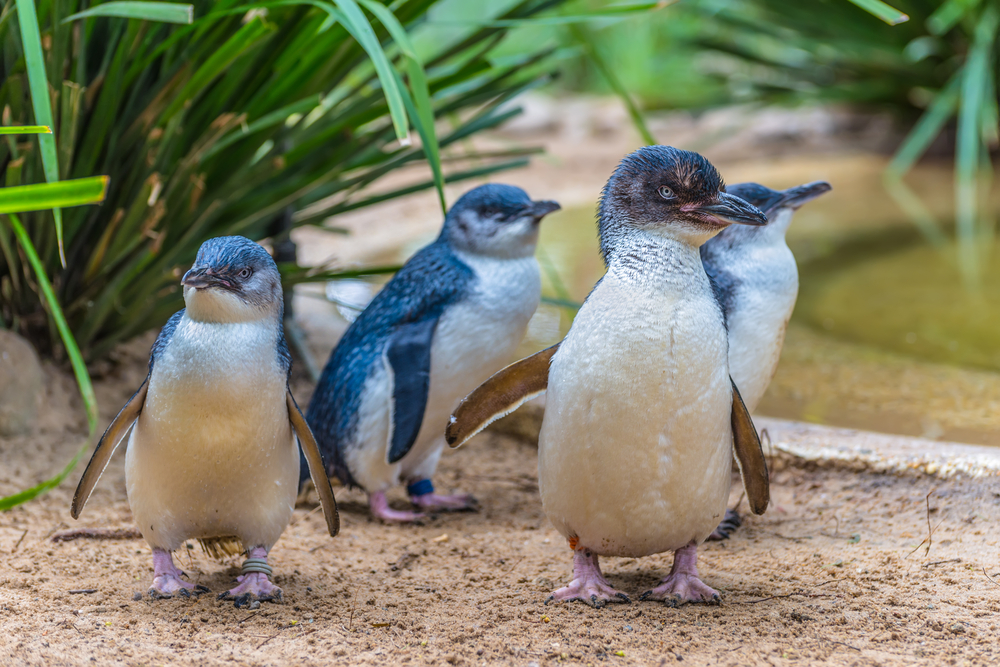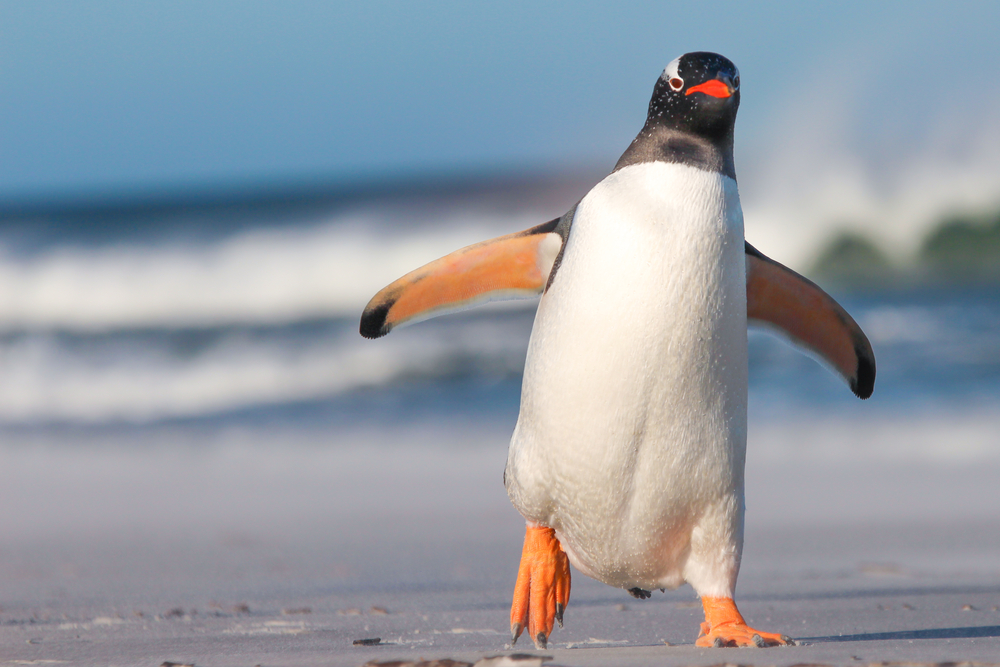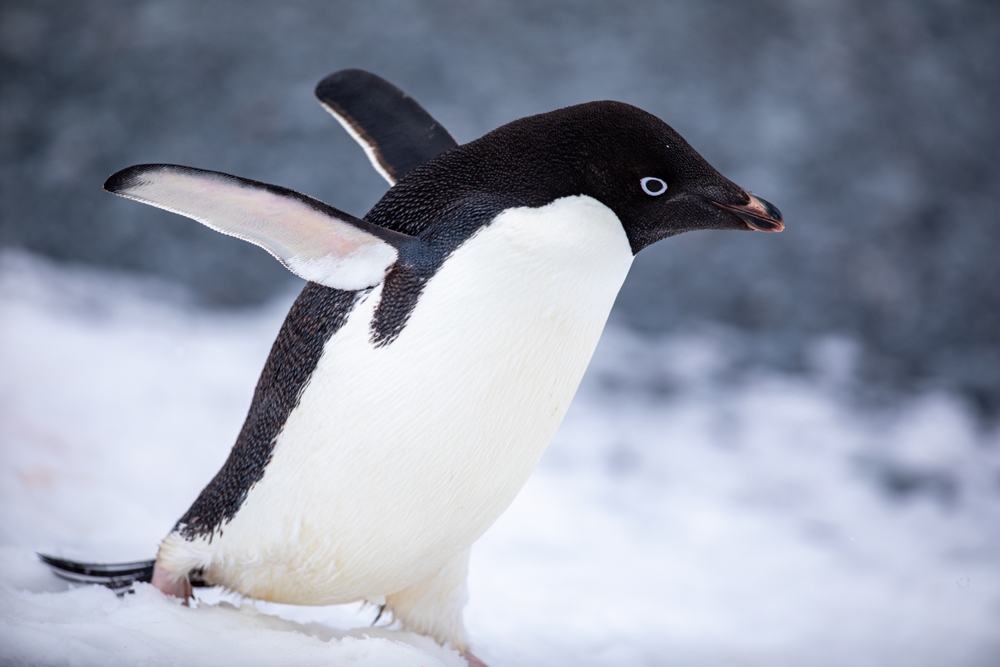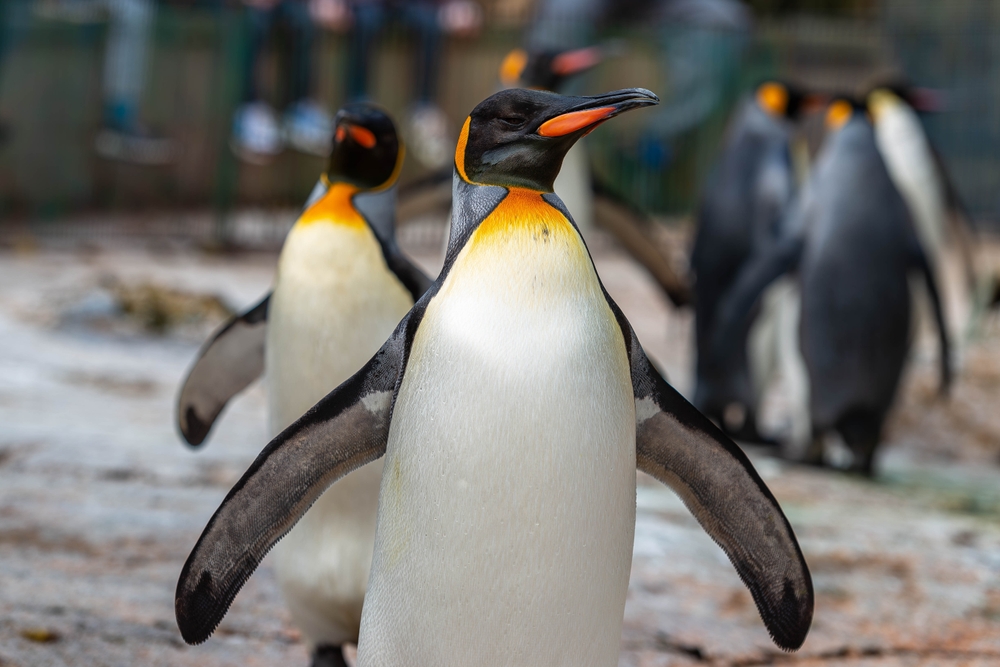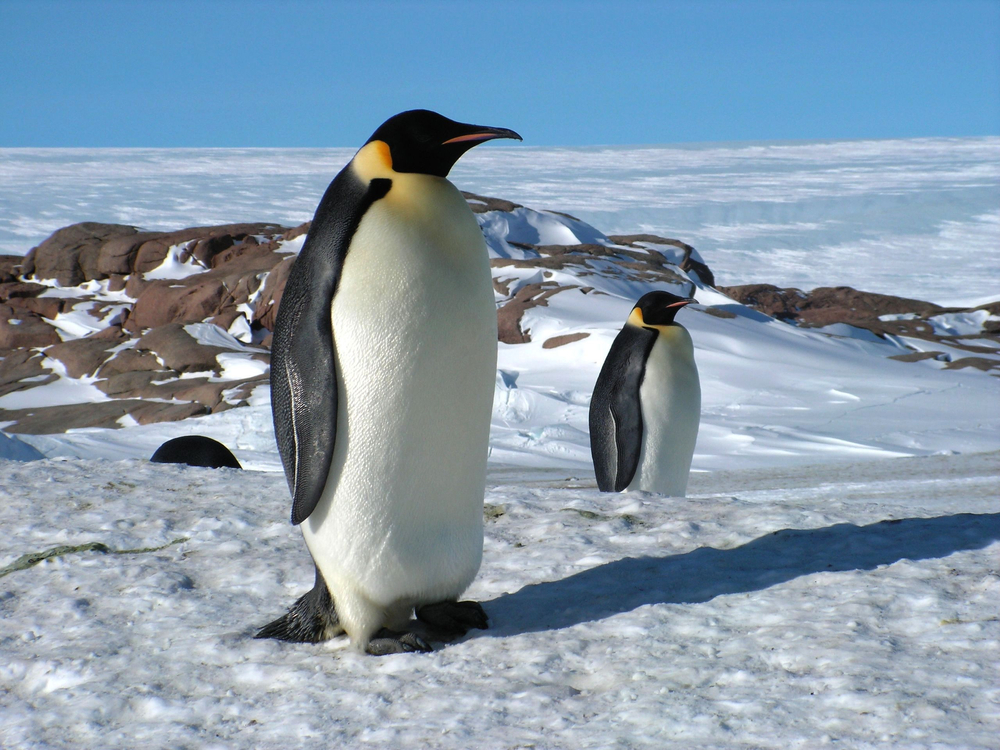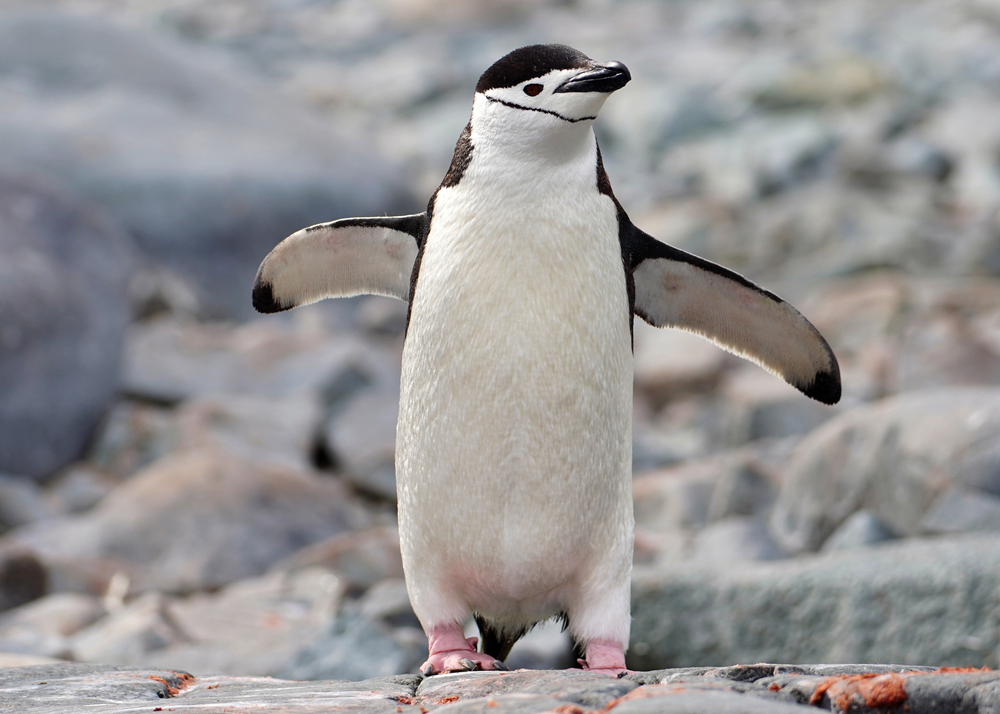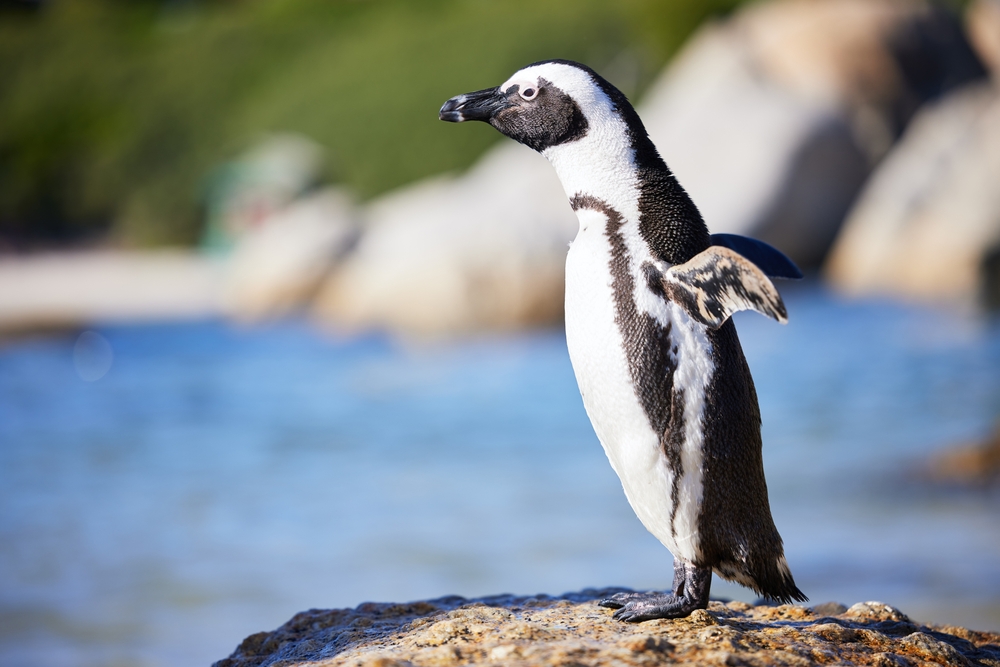The Little Blue Penguin’s closest relative is the White-flippered Penguin (Eudyptula minor albosignata), a subspecies or closely related form found only on the Banks Peninsula of New Zealand. Some scientists debate whether it should be classified as a separate species.
About
The Little Blue Penguin (Eudyptula minor), also known as the Fairy Penguin, is the smallest member of the Spheniscidae family. Native to southern Australia, Tasmania, and New Zealand, this diminutive penguin is beloved for its charming size and distinctive bluish plumage, which sets it apart from all other penguin species. It thrives along coastlines, nesting in burrows, rock crevices, and even under manmade structures near the shore.
Standing only 30 to 33 centimeters (12 to 13 inches) tall and weighing about 1 kilogram (2.2 pounds), the Little Blue Penguin is a fraction of the size of its Antarctic relatives. Its slate-blue back and flippers blend with the ocean surface, while its white underside provides camouflage from below—a vital adaptation for avoiding predators.
Little Blue Penguins are adept swimmers, using rapid wingbeats to propel themselves underwater at speeds of up to 6 km/h (4 mph). Their diet is primarily composed of small schooling fish, squid, and crustaceans, which they catch close to shore during foraging trips that can last hours or days.
Breeding occurs in colonies, with pairs often returning to the same burrow year after year. Both parents share responsibilities, laying two eggs per clutch and alternating incubation and chick-feeding duties. Remarkably, many individuals are monogamous, forming long-term pair bonds that strengthen over successive breeding seasons.
Though listed as Least Concern, local populations face threats from habitat loss, introduced predators (such as dogs, cats, and foxes), overfishing, and human disturbance. Conservation initiatives, including protected colonies and ecotourism programs like the famed Penguin Parade on Phillip Island, Australia, play a vital role in their survival.
Charming, social, and highly adaptable, the Little Blue Penguin stands as a delightful ambassador for the diverse world of penguins.
Physical Characteristics
The Little Blue Penguin, also known as the Fairy Penguin, is the smallest penguin species in the world, recognized for its unique bluish plumage.
-
Coat/Plumage: Unlike the classic black-and-white coloring of most penguins, Little Blue Penguins have slate-blue to indigo feathers on the back, head, and flippers, with a bright white underside. Their plumage provides excellent camouflage against the sea and sky.
-
Face: Their head is rounded with a short, dark gray bill. Eyes are pale gray or bluish, giving them a soft expression.
-
Body: Compact and slender, adapted for shallow coastal foraging. Their small size makes them agile but more vulnerable to predators.
-
Flippers: Short and bluish, used as paddles for efficient swimming in coastal waters.
-
Feet: Pale pink with black claws, webbed for swimming and used for clambering onto rocky shores.
-
Tail: Short and wedge-shaped, used for balance while standing upright.
Size:
-
Height: About 12 to 13 in (30 to 33 cm).
-
Weight: Typically 2.2 to 3.3 lbs (1 to 1.5 kg), making them the smallest of all penguins.
The Little Blue Penguin’s tiny stature and distinctive blue coloration make it unlike any other penguin species. Adapted for temperate coasts rather than icy environments, it thrives in New Zealand and southern Australia.
Reproduction
The reproductive cycle of the Little Blue Penguin is adapted to the temperate coasts of New Zealand and southern Australia, where they breed in burrows and rocky crevices.
-
Mating and Courtship:
-
Little Blue Penguins are generally monogamous, often reuniting with the same mate each season.
-
Courtship includes mutual preening, vocal calls, and bill tapping.
-
Breeding typically occurs from June to December, though timing can vary by location.
-
-
Nesting:
-
They nest in burrows, rock crevices, or under vegetation, often close to the shoreline.
-
Many colonies are established near human settlements, sometimes using artificial nest boxes provided by conservation groups.
-
-
Egg Laying and Incubation:
-
The female usually lays two eggs per clutch.
-
Both parents share incubation duties, alternating shifts of 1–2 days.
-
Incubation lasts about 36 to 40 days.
-
-
Chick Development:
-
Chicks hatch with gray down and weigh about 1.6 oz (45 g).
-
Parents take turns foraging at sea and feeding the chicks with regurgitated fish.
-
-
Fledging and Independence:
-
Chicks fledge at about 7 to 8 weeks, when they molt into waterproof juvenile plumage.
-
Once fledged, they leave the burrow to forage independently at sea.
-
Little Blue Penguins’ flexible breeding behavior, including the possibility of raising two clutches in a single season, helps maximize reproductive success in favorable conditions. However, predation by introduced mammals and habitat disturbance remain major challenges for chick survival.
Lifespan
The Little Blue Penguin, the smallest penguin species, faces different survival challenges compared to its larger Antarctic relatives. Its lifespan reflects the pressures of coastal living and predation.
-
Lifespan in the Wild:
Little Blue Penguins typically live 6 to 10 years in their natural habitat, though some individuals reach up to 15 to 20 years under favorable conditions. Juveniles experience the highest mortality rates, often falling prey to predators or struggling to find sufficient food. -
Lifespan in Captivity:
In aquariums and wildlife sanctuaries with veterinary care and steady food supplies, they can live longer, often beyond 20 years.
Threats to the Little Blue Penguin:
-
Introduced Predators: Dogs, cats, stoats, and foxes pose major threats to eggs, chicks, and adults in breeding colonies near human settlements.
-
Human Disturbance: Coastal development, vehicle traffic, and tourism can disrupt burrows and reduce safe nesting areas.
-
Food Availability: Overfishing and changing ocean conditions reduce populations of anchovies, sardines, and other small schooling fish.
-
Pollution: Oil spills and plastic pollution threaten coastal colonies by damaging plumage and reducing prey availability.
Conservation programs in Australia and New Zealand—including predator control, marine protection, and artificial nest provision—are vital to the continued survival of this species.
Eating Habits
Little Blue Penguins are carnivorous seabirds that forage in shallow coastal waters close to their breeding colonies.
-
Diet:
Their primary prey consists of small schooling fish such as anchovies, sardines, and pilchards. They also eat squid and small crustaceans when available. -
Foraging Strategy:
Unlike deep-diving Antarctic penguins, Little Blues are shallow divers, typically hunting within 33 to 66 ft (10 to 20 m) of the surface, though they can dive to over 200 ft (60 m) when needed.
They use quick, wing-propelled strokes to pursue prey underwater. -
Hunting Behavior:
Most hunting occurs during daylight hours, often close to shore. They usually forage alone or in small groups, though larger feeding flocks may form when prey is abundant. -
Feeding the Young:
Adults capture fish, store them in their stomachs, and regurgitate partially digested food to feed their chicks at the burrow.
During chick-rearing, they make frequent short trips to ensure a steady food supply. -
Seasonal Variation:
Diet composition shifts with seasonal fish availability. In some areas, sardines dominate, while in others, anchovies, pilchards, or squid form the bulk of the diet.
Little Blue Penguins’ reliance on nearshore fish makes them particularly vulnerable to coastal overfishing and pollution. Despite their small size, they are agile and efficient hunters, well adapted to the temperate marine ecosystems they inhabit.
Uniqueness
The Little Blue Penguin (Eudyptula minor) is the world’s smallest penguin and possesses several distinctive traits that set it apart from other species:
-
Smallest Penguin: Standing just 12 to 13 in (30 to 33 cm) tall and weighing around 2 to 3 lbs (1 to 1.5 kg), they are the tiniest of all penguin species.
-
Blue Plumage: Their slate-blue to indigo feathers give them a unique coloration not seen in other penguins, blending with the sea for camouflage.
-
Nocturnal Colony Returns: Unlike most penguins, they return to their nesting burrows at night, helping them avoid predators on land.
-
Burrow Nesters: They dig burrows in sand dunes, soil, or use natural crevices, often forming colonies near human settlements.
-
Vocal Personalities: Known for their loud calls—ranging from growls to yelps—they are surprisingly noisy for such a small species.
-
Temperate Adaptation: Instead of the icy Antarctic, Little Blue Penguins thrive in temperate coastal climates of New Zealand and southern Australia.
-
Double Brooding: In favorable years with good food supply, pairs may raise two clutches in a single season, rare among penguins.
The Little Blue Penguin’s tiny size, nocturnal habits, and striking blue feathers make it one of the most unique and beloved penguin species, especially in regions where they live alongside humans.
Be the First to Share Photos of This Species.
FAQ’s
1. What is the species closest to the Little Blue Penguin?
2. How does the Little Blue Penguin compare to other penguins?
Little Blue Penguins are the smallest of all penguins, far smaller than Emperor or King Penguins. Unlike Antarctic species adapted to extreme cold, they thrive in temperate climates. They are also unique for their nocturnal return to colonies and their ability to sometimes raise two clutches per season.
3. What national parks provide an opportunity to see the Little Blue Penguin?
Little Blue Penguins can be observed in protected coastal reserves and parks in New Zealand and southern Australia, including:
-
Oamaru Blue Penguin Colony (New Zealand, managed reserve) – a famous site for evening penguin arrivals.
-
Phillip Island Nature Parks (Victoria, Australia) – home to the world-renowned “Penguin Parade.”
-
Pohatu Marine Reserve (New Zealand) – a key protected area for the White-flippered Penguin.
-
Tasman National Park (Tasmania, Australia) – where wild colonies nest along rocky coastlines.
These parks and reserves provide safe viewing opportunities while protecting the species’ fragile coastal habitats.



































































